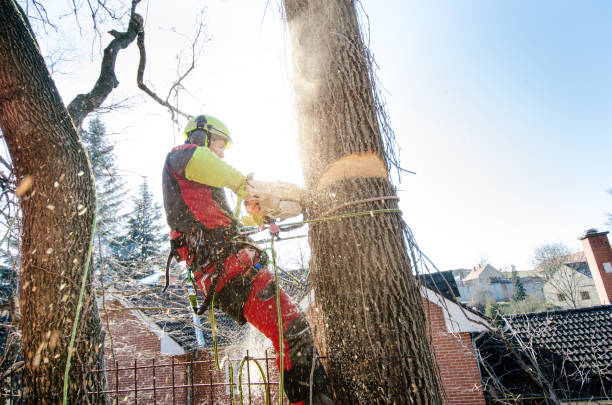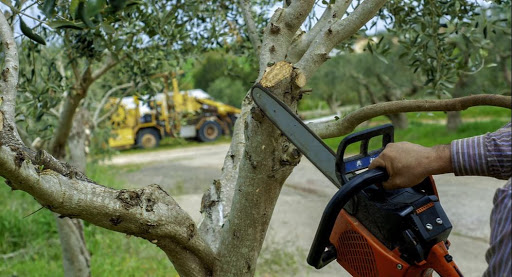Introduction
In the realm of construction and landscaping, effective land clearing is paramount. Whether you're preparing a site for a new building, developing agricultural land, or simply enhancing your property’s landscape, understanding the best practices in land clearing can make all the difference. This comprehensive guide delves into the intricacies of land clearing, tree care strategies like tree lopping and removal, stump removal techniques, and essential pruning methods. By adhering to these best practices, you can ensure that your site is well-prepared while maintaining ecological balance.
Land Clearing Best Practices to Prepare Your Site Effectively
When it comes to preparing a site effectively, knowing the right steps in land clearing is vital. You may wonder why proper planning is necessary before diving into any major project. Well, inadequate land clearing can lead to numerous issues such as soil erosion, loss of habitat for wildlife, and even legal problems if not done according to local regulations.
Understanding Land Clearing
What is Land Clearing?
Land clearing involves removing trees, stumps, brush, weeds, and other obstacles from an area to prepare for construction or agriculture. It’s not just about cutting down trees; it requires careful planning and execution to minimize environmental impact.
The Importance of Tree Care in Land Clearing
Why Tree Care Matters?
Proper tree care during land clearing helps maintain local biodiversity and protects against soil erosion. Trees provide critical habitats for wildlife and contribute significantly to carbon sequestration.
Types of Land Clearing Techniques
Mechanical Land Clearing- Heavy machinery like bulldozers and excavators are used. Quick but may disturb soil structure.
- Involves hand tools like chainsaws and axes. More labor-intensive but less disruptive.
- Uses herbicides to kill unwanted vegetation. Requires careful application to avoid affecting desirable plants.
Step-by-Step Guide: Preparing Your Site for Land Clearing
1. Assessing Site Conditions
- Understand the terrain: Is it flat or hilly? Identify existing vegetation: What types of trees are present?
2. Securing Necessary Permits
- Check local regulations on land clearing. Obtain permits related to tree removal or environmental protection.
3. Planning Your Approach
- Decide on mechanical vs manual techniques. Consider the timing: Are there seasonal factors affecting wildlife?
4. Tree Lopping vs Tree Removal
- When should you opt for tree lopping instead of complete removal? Tree lopping is often a better choice when you want to retain certain trees but need them pruned back significantly.
Tree Removal: Guidelines & Best Practices
When is Tree Removal Necessary?
Sometimes removal becomes inevitable due to:
- Dead or diseased trees Trees posing risks to structures Invasive species threatening local flora
Safe Tree Removal Techniques
- Always check for utility lines before cutting. Use appropriate gear like hard hats and protective eyewear. Cut at an angle to ensure proper fall direction.
Stump Removal Methods
1. Grinding Stumps
- Quick method using a stump grinder.
2. Chemical Stump Removal
- Apply chemicals that speed up decomposition.
3. Manual Extraction
- Digging out with tools like shovels or pickaxes.
Tree Care Information Post-Clearing
Essential Pruning Techniques After Land Clearing
After clearing your site, you might want to focus on maintaining any trees left behind:
1. Thinning
- Reduces overcrowding by removing select branches.
2. Deadwood Removal
- Enhances health by taking out dead limbs that could harbor pests.
3. Canopy Reduction
- Lowers height without compromising health; ideal for urban settings where height restrictions apply.
Tree Transplanting Best Practices
Why Transplant Trees?
Transplanting allows you to save valuable specimens during development projects:
Steps for Successful Transplanting:
Choose the right time – early spring or fall works best.
Prepare your new location – ensure soil quality matches the tree's needs.
Water thoroughly before moving – keeps roots hydrated during relocation.
The Role of Tree Trimming in Landscape Management
Tree trimming isn't just aesthetics; it's crucial for safety and health:
Benefits of Regular Trimming:
- Removes hazardous branches Promotes healthy growth by allowing sunlight through Improves air circulation within foliage
Legal Considerations in Land Clearing Practices
Understanding zoning laws and environmental regulations can save headaches later:

Key Legal Aspects:
- Check local ordinances regarding protected species. Understand easement rights if near property lines.
Environmental Impact: Minimizing Damage During Land Clearing
Preserving ecosystem integrity should be a priority:
Strategies Include:
Implementing buffer zones near waterways. Scheduling work outside nesting seasons for birds. Using low-impact machinery when possible.Frequently Asked Questions (FAQs)
Q1: What is the difference between tree lopping and tree removal?
A: Tree lopping involves trimming back branches while retaining the trunk; tree removal means taking down the entire tree.
Q2: How does stump removal affect future landscaping?
A: Removing stumps prevents regrowth issues and makes space for new plantings or structures without obstruction.
Q3: Can I perform my own land clearing?
A: Yes, but it’s essential to understand techniques and safety practices beforehand, especially if heavy machinery is involved.
Q4: What are some signs that a tree should be removed?
A: Look for dead branches, significant leaning, or signs of disease such as fungal growth or bark decay.
Q5: Is chemical stump removal safe for my garden?
A: When applied correctly following manufacturer guidelines, chemical treatments are generally safe but should be monitored closely around desirable plants.
Q6: How often should I prune my trees?

Conclusion
In conclusion, understanding "Land Clearing Best Practices to Prepare Your Site Effectively" goes beyond merely removing unwanted vegetation—it encompasses ecological considerations, legal requirements, and ongoing care strategies post-clearing efforts. By incorporating thoughtful tree lopping townsville Townsville Tree Lopping Services practices like proper tree care methods such as pruning techniques alongside efficient handling of tree lopping and removal tasks—all while ensuring minimal environmental disruption—you set yourself up not only for success in your current project but also contribute positively towards sustainable land management practices overall.
This article has covered extensive ground regarding effective land clearing practices while integrating essential aspects of tree care such as transplanting methods and stump removal techniques—equipping you with knowledge vital for successful project implementation!